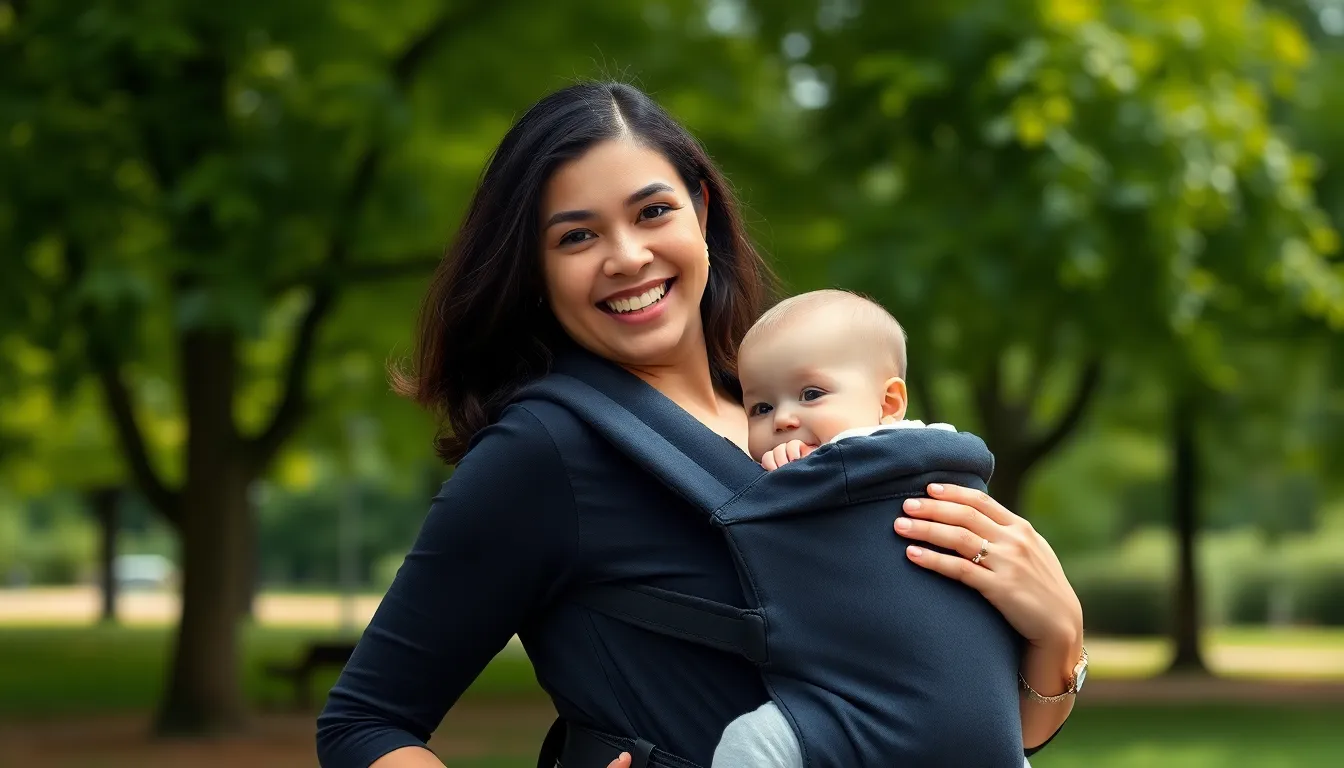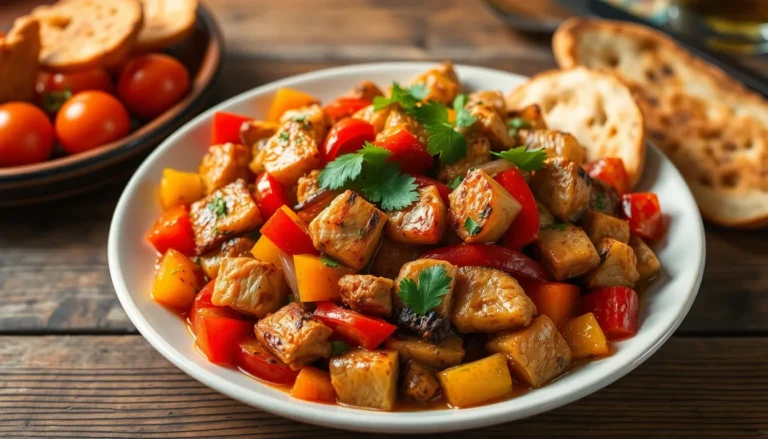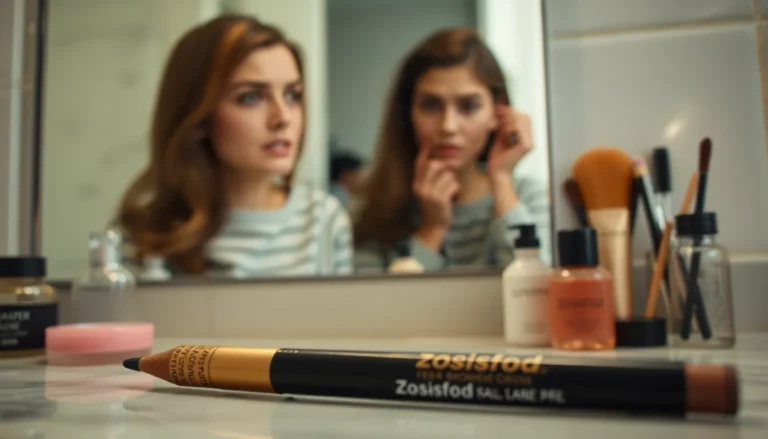Table of Contents
ToggleChoosing the right baby carrier can transform the way parents bond with their little ones. With a variety of options available, each type offers unique benefits that cater to different lifestyles and preferences. From structured carriers to soft wraps, understanding these choices can make all the difference in comfort and convenience.
As parents navigate through the joys and challenges of early childcare, the right carrier not only provides a safe space for babies but also allows for hands-free mobility. Whether it’s a quick trip to the store or a long hike in nature, finding the perfect baby carrier can enhance these experiences. Let’s explore the different types of baby carriers to help parents make an informed decision that suits their needs and those of their growing child.
Overview of Baby Carrier Types
Selecting the appropriate baby carrier involves understanding the specific types available. Each type is designed to cater to different preferences and activities.
- Structured Carriers
Structured carriers include a wide variety of products featuring padded straps and support for both the parent and baby. These carriers often provide structured support for the baby’s spine. Many structured carriers offer multiple carrying positions, such as front-facing, back, and hip carries.
- Soft Wraps
Soft wraps consist of long pieces of fabric that allow parents to create a custom fit. These wraps offer versatility, as parents can adjust the fabric to suit their baby’s developmental stage. Various fabric types can provide comfort and breathability.
- Mei Tai Carriers
Mei Tai carriers feature a combination of soft fabric and straps. They provide a traditional, customizable fit similar to wraps but with structured support. Parents can use them for front or back carries, catering to different preferences.
- Ring Slings
Ring slings consist of a length of fabric threaded through two rings, allowing easy adjustments. They are ideal for quick outings, offering convenience for parents who need a simple carrier. Parents can use ring slings in various positions, enhancing carrying comfort.
- Backpack Carriers
Backpack carriers support older infants and toddlers, featuring a frame for stability and comfort on longer hikes or excursions. They often include storage for essentials, making them suitable for outdoor activities. Many models offer adjustable components to fit parents of different sizes.
- Buckle Carriers
Buckle carriers combine the benefits of structured and soft carriers, featuring buckles for quick adjustments. These carriers provide support and comfort for both the child and parent. Many designs accommodate various carrying positions, appealing to diverse preferences.
Understanding these baby carrier types helps parents choose the best option for their lifestyle and ensures safety and comfort for their baby.
Soft Structured Carriers

Soft structured carriers (SSCs) provide a balanced combination of comfort and support. These carriers are popular among parents for their ease of use and versatility in carrying positions.
Features and Benefits
- Padded Support: SSCs include padded shoulder straps and a waist belt, offering comfort during extended wear.
- Multiple Carrying Positions: These carriers allow front, back, and hip carrying options, accommodating different preferences and ages.
- Adjustability: SSCs often feature adjustable straps, ensuring a secure fit for both the wearer and the baby.
- Ease of Use: Most SSCs include buckles, simplifying the process of putting on and taking off the carrier.
- Ventilation: Many models incorporate breathable fabrics, promoting airflow to keep both the parent and baby comfortable.
Best Uses
- Daily Errands: SSCs excel in busy environments, allowing parents to have hands-free convenience while grocery shopping or running errands.
- Hiking and Outdoor Activities: Many SSCs offer additional support, making them suitable for hiking trails and outdoor excursions with varying terrains.
- Traveling: SSCs can fold easily and fit into a backpack, making them practical for travel.
- Bonding Time: These carriers promote closeness, helping strengthen the parent-child bond with skin-to-skin contact and easy interaction.
- Social Settings: SSCs allow for quick transitions between carrying positions, making them ideal for social events where frequent adjustments may be necessary.
Wrap Carriers
Wrap carriers offer a versatile and snug option for babywearing. They consist of long pieces of fabric that can be tied in various ways to secure the baby, providing closeness and comfort.
Types of Wraps
- Woven Wraps
Woven wraps feature a tightly woven fabric, providing support and durability. They accommodate various carrying positions, making them suitable for newborns to toddlers.
- Stretchy Wraps
Stretchy wraps use elastic materials, allowing for simple tying methods. They adapt well to a baby’s body and are ideal for newborns but may lack support for older infants.
- Hybrid Wraps
Hybrid wraps combine elements of woven and stretchy materials, offering ease of use and versatility. They provide sufficient support while maintaining a soft feel.
- Ring Slings
Ring slings consist of a piece of fabric threaded through two rings. They allow for quick adjustments and make it easier to nurse or carry the baby on one hip.
Pros and Cons
| Pros | Cons |
|---|---|
| Offers multiple carrying options for comfort | Requires practice to master wrapping technique |
| Provides excellent support for the baby | Can be warm, especially in hot weather |
| Promotes bonding through skin-to-skin contact | May be cumbersome for longer use |
| Suitable for various ages and sizes | Limited storage space compared to structured carriers |
Ring Slings
Ring slings offer a simple and adjustable method for babywearing, making them an appealing choice for parents. They consist of a long piece of fabric threaded through two rings, allowing for quick adjustments and a custom fit.
How to Use a Ring Sling
- Threading the Fabric: Pass one end of the fabric through both rings and pull it down to create a loop.
- Creating the Sling: Adjust the fabric to ensure the rings are positioned on the shoulder.
- Positioning the Baby: Hold the baby close, placing them inside the pouch created by the fabric. Their legs should be in an “M” position for optimal hip support.
- Adjusting for Comfort: Pull the fabric through the rings to tighten or loosen the sling. Ensure that the baby’s back is supported, and their head is above the fabric for visibility.
- Nursing: To nurse discreetly, adjust the sling to create a comfortable space for the baby while still supporting them.
Advantages and Disadvantages
| Advantages | Disadvantages |
|---|---|
| Easy to adjust for different sizes | Requires practice to master |
| Quick to put on and take off | Limited storage for essentials |
| Lightweight and portable | Distribution of weight can be uneven |
| Supports multiple carrying positions | May cause shoulder strain with heavier babies |
| Convenient for nursing | Less suitable for long periods of wear |
Ring slings provide a versatile option for parents seeking flexibility and ease while engaging in daily activities.
Mei Tai Carriers
Mei Tai carriers combine the benefits of structured support with the flexibility of soft fabrics. These traditional Asian carriers are versatile and can be used for various carrying positions.
Design and Functionality
Mei Tai carriers consist of a rectangular panel made of fabric with four straps extending from the corners. The panel supports the baby’s weight while the straps secure the carrier to the wearer’s body, resulting in even weight distribution. Key features include:
- Adjustable Straps: Straps allow for a customized fit for different body types and carrying positions.
- Multi-Position Carrying: They enable front, back, and hip carrying, accommodating the baby’s growth and changing preferences.
- Breathable Fabrics: Many Mei Tai carriers utilize breathable materials for comfort in various climates.
- Easy to Clean: Most can be machine washed, making them low-maintenance.
Mei Tai carriers offer parents the ability to engage in hands-free activities, enhancing bonding through closeness and support.
Suitable Age Range
Mei Tai carriers can comfortably accommodate infants from around 7 pounds up to toddlers weighing approximately 40 pounds. They provide secure support for newborns when properly positioned, ensuring their legs can adopt a comfortable ‘M’ shape. Features for different ages include:
- Infants: Position the baby high on the caregiver’s chest for proximity and bonding.
- Older Babies: Adjust the straps to support the child’s back and encourage exploration as the child sits upright.
- Toddlers: Utilize the back-carry option to provide a convenient method for heavier children, distributing weight evenly across the caregiver’s body.
This age range makes Mei Tai carriers a long-lasting option for parents looking for a flexible carrying solution as their child grows.
Choosing the right baby carrier is crucial for enhancing the parent-child bond while ensuring comfort and safety. Each type of carrier offers distinct advantages that cater to various lifestyles and preferences. Whether opting for a structured carrier, a soft wrap, or a Mei Tai, parents can find options that suit their needs and those of their growing child.
It’s essential to consider factors like ease of use, adjustability, and comfort when selecting a carrier. With the right choice, parents can enjoy hands-free mobility while keeping their little ones close, making everyday activities more enjoyable and fulfilling.







